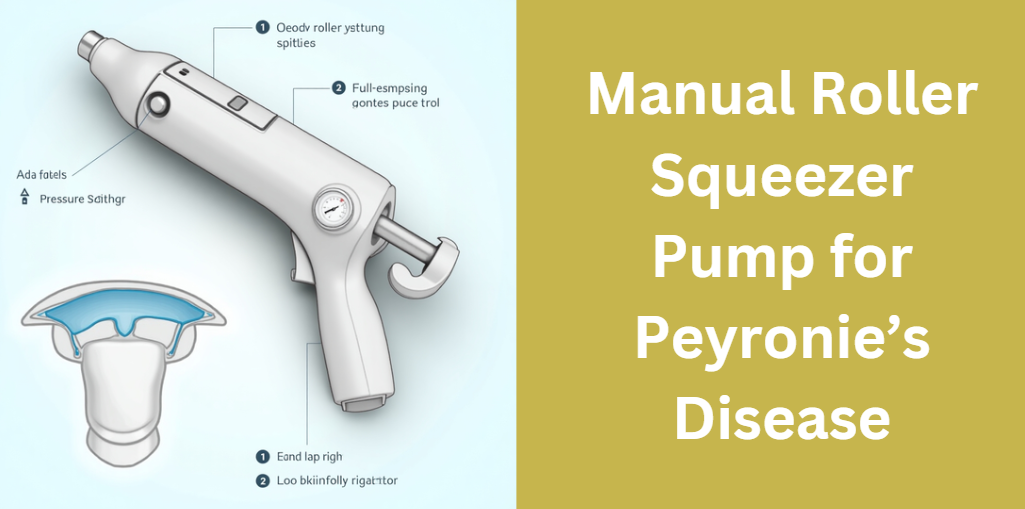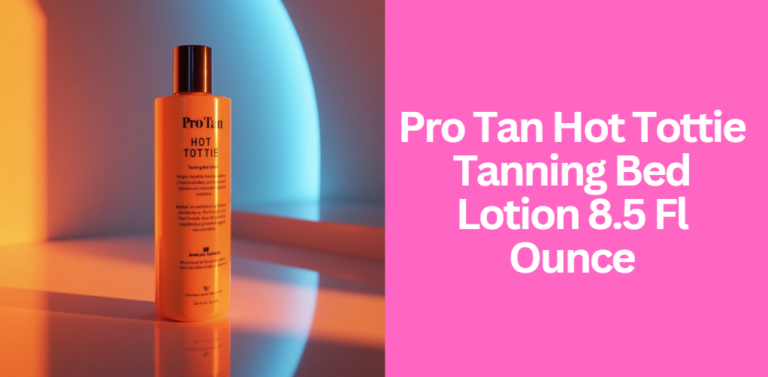Manual Roller Squeezer Pump for Peyronie’s Disease
Peyronie’s disease, characterized by the development of fibrous scar tissue inside the penis, often leads to curvature, discomfort, and emotional distress. This guide is dedicated to exploring one non-surgical option—the manual roller squeezer pump for peyronie’s disease—that has been gaining attention among men seeking alternative therapies. In the following sections, you will find an in-depth discussion of its mechanism, clinical insights, practical usage guidelines, and how it compares with traditional treatments. Our aim is to provide you with a comprehensive resource that is both easy to read and rich with expert information.
Introduction
Peyronie’s disease affects many men worldwide and can significantly impact quality of life. While several treatment options exist, both surgical and non-surgical, many patients are exploring less invasive methods to manage symptoms. This article focuses on the manual roller squeezer pump for peyronie’s disease, a device designed to help alleviate curvature and discomfort through mechanical therapy.
Unlike standard vacuum erection devices, this manual roller squeezer pump employs a unique method of gentle, controlled pressure that may stimulate tissue remodeling over time. By reading this guide, you will gain insight into its design, benefits, and how it fits within the broader context of Peyronie’s disease treatment.
Understanding Manual Roller Squeezer Pump for Peyronie’s Disease
What Is a Manual Roller Squeezer Pump for Peyronie’s Disease?
The manual roller squeezer pump for peyronie’s disease is a mechanical device that uses manual pressure through a rolling mechanism to apply gentle, yet consistent compression and stretching to the penile tissue. This action is believed to help remodel the scar tissue responsible for the curvature and discomfort associated with Peyronie’s disease. Unlike electronic or fully automated vacuum pumps, this device requires manual operation, which can provide users with greater control over the pressure applied during each session.
Mechanism of Action
The pump works by combining two key actions:
- Rolling Compression: As the roller is moved along the shaft of the penis, it exerts a controlled squeezing force that may help break down fibrous scar tissue.
- Tissue Stretching: The device gently stretches the tissue, encouraging improved blood flow and potentially leading to better tissue flexibility.
This dual action aims to not only reduce penile curvature but also enhance overall penile health. The controlled application of pressure and stretching is thought to stimulate natural healing processes, similar to certain physical therapy techniques used in other areas of the body.
Potential Benefits
Patients who use the manual roller squeezer pump for peyronie’s disease may experience:
- A gradual reduction in penile curvature
- Improved penile length and flexibility
- A decrease in pain or discomfort during an erection
Research into mechanical therapies has shown promise, with some studies noting improvements in penile curvature and patient satisfaction when devices are used correctly. While individual outcomes can vary, many experts believe that with proper use, this device offers a safe adjunct or alternative to more invasive treatments.
Scientific and Clinical Insights
Research Background
Clinical studies have examined the use of mechanical devices to treat Peyronie’s disease, particularly in their ability to modify scar tissue and improve penile function. For instance, research involving vacuum erection devices has demonstrated significant improvements in curvature and penile length when used consistently over a period of weeks. Although the manual roller squeezer pump for peyronie’s disease operates differently, it builds on the same fundamental principles of mechanical therapy.
Understanding the Physiology
The underlying idea is that controlled mechanical stress can encourage tissue remodeling. By applying a precise amount of pressure and stretch, the device may help to:
- Disrupt the formation of fibrous plaques
- Enhance local blood circulation
- Promote collagen realignment and healing
These physiological responses are similar to those observed in physical therapy treatments for musculoskeletal injuries, where gradual, controlled movements lead to tissue recovery.
Safety and Efficacy
Safety is paramount with any treatment. Experts recommend using the manual roller squeezer pump for peyronie’s disease with caution, adhering to guidelines such as:
- Not exceeding safe pressure limits (typically around 200-250 mmHg)
- Monitoring the duration of each session to avoid overuse
When used correctly, the device is considered safe for most stages of Peyronie’s disease, potentially reducing the need for surgical intervention.
Step-by-Step Guide to Using the Device
Pre-Treatment Considerations
Before starting treatment with the manual roller squeezer pump for peyronie’s disease, it is essential to consult with a healthcare professional. They can help determine whether this method is suitable for your condition and advise on realistic expectations. Preparing mentally and physically for a new treatment regimen is as important as understanding the device itself.
How to Use the Device
Using the device correctly is crucial for obtaining the best results. Here’s a simplified guide:
- Assembly: Begin by assembling the device according to the manufacturer’s instructions. Ensure all parts are secure.
- Warm-Up: It is advisable to perform a short warm-up, such as a warm shower, to relax the penile tissue.
- Application: Gently position the device on the penis. Begin with light pressure and gradually increase as your comfort allows.
- Rolling Action: Move the roller slowly along the shaft, applying even pressure. Maintain a consistent pace to avoid sudden or excessive force.
- Session Duration: Typically, sessions should last between 10 to 15 minutes. Adjust based on comfort and professional advice.
Below is a table summarizing the recommended usage guidelines:
| Step | Action | Duration/Frequency |
|---|---|---|
| Assembly | Assemble device carefully | Once, or as needed |
| Warm-Up | Warm shower or warm towel | 5 minutes before treatment |
| Application | Position device and begin use | Gradually increasing pressure |
| Rolling Action | Slowly roll along the penile shaft | 10-15 minutes per session |
| Post-Session | Clean and store device properly | Immediately after each session |
Safety Tips and Best Practices
- Always monitor how your body responds during treatment.
- Avoid applying too much pressure, which can lead to discomfort or tissue damage.
- Follow the manufacturer’s maintenance and cleaning instructions to ensure longevity and hygiene.
User Experiences and Case Studies
Real-Life Testimonials
Many users have reported positive experiences with the manual roller squeezer pump for peyronie’s disease. For example, several patients shared that after a few weeks of consistent use, they noticed a gradual reduction in curvature and an improvement in overall penile function. While individual results vary, these testimonials offer hope and practical insights into the treatment process.
Expert and Physician Insights
Urologists and sexual health experts emphasize that while mechanical therapy may not replace conventional treatments entirely, it can serve as a valuable supplement. Interviews with healthcare professionals reveal that patients who incorporate mechanical devices alongside other treatments often experience enhanced outcomes, especially when the therapy is tailored to their unique condition.
Integrating the Pump with Other Therapies
Combination Approaches
Integrating the manual roller squeezer pump for peyronie’s disease with other treatment modalities can offer synergistic benefits. For instance, combining its use with medications or intralesional injections might accelerate improvements. Additionally, engaging in physical therapy exercises designed to stretch and strengthen the penile tissue can further enhance the device’s effectiveness.
Customized Treatment Plans
Individualized treatment is key. A typical integrated plan might include:
- Daily sessions with the manual pump
- Weekly physical therapy routines
- Regular consultations with a healthcare provider to adjust the treatment plan as needed
These combined approaches can provide a more comprehensive strategy for managing Peyronie’s disease.
Comparative Analysis
Manual Roller Squeezer Pump for Peyronie’s Disease vs. Traditional Vacuum Pumps
While both methods aim to improve penile function, there are distinct differences:
- Manual Roller Squeezer Pump for Peyronie’s Disease: Offers controlled, manual operation that may better target scar tissue through a rolling action.
- Traditional Vacuum Pumps: Rely on creating a vacuum to induce an erection, primarily focusing on blood flow rather than tissue remodeling.
Below is a comparison table for clarity:
| Feature | Manual Roller Squeezer Pump for Peyronie’s Disease | Traditional Vacuum Pumps |
|---|---|---|
| Operation Method | Manual rolling and squeezing | Vacuum creation |
| Control Over Pressure | High, with user adjusting force manually | Moderate, preset vacuum levels |
| Targeted Tissue Remodeling | Focused mechanical stress on scar tissue | Indirect impact through increased blood flow |
| User Experience | May require practice for proper technique | Often easier to use with automated functions |
Cost-Effectiveness and Value
When considering cost, the manual pump is generally more affordable and offers long-term benefits with proper maintenance. It is essential, however, to weigh the initial investment against potential improvements in quality of life and reduced need for surgical interventions.
Frequently Asked Questions (FAQ)
What is the difference between a manual roller squeezer pump and a standard vacuum pump?
The manual roller squeezer pump for peyronie’s disease employs a manual rolling action that provides controlled pressure and tissue stretching, whereas a standard vacuum pump primarily works by creating negative pressure to induce an erection.
How long before I see improvements?
Results vary by individual. Some users may notice gradual improvements in curvature and flexibility within a few weeks of consistent use, while others might require a longer treatment period.
Are there any risks or side effects?
When used as directed, the device is generally safe. However, excessive pressure or prolonged use may cause discomfort or minor tissue irritation. Always consult a healthcare professional for personalized advice.
Maintenance, Care, and Troubleshooting
Device Care and Storage
Proper maintenance is crucial for ensuring the longevity and effectiveness of the manual roller squeezer pump for peyronie’s disease. After each use, clean the device thoroughly using warm water and mild soap. Ensure that all parts are dry before storage. Keeping the device in a clean, dry place can help prevent wear and tear.
Troubleshooting Common Issues
Users may occasionally encounter issues such as discomfort or mechanical glitches. Common troubleshooting steps include:
- Reducing pressure if discomfort is experienced
- Reviewing the user manual for assembly or operational errors
- Contacting customer support for persistent issues or warranty inquiries
Where to Buy and How to Choose the Right Device
Trusted Manufacturers and Vendors
When purchasing a manual roller squeezer pump for peyronie’s disease, it is important to select reputable manufacturers. Look for vendors who provide detailed product information, user testimonials, and robust customer support. Reading reviews and consulting with healthcare professionals can help guide your decision.
Price and Value Considerations
Evaluate the price in relation to the features offered. A table comparing popular options can be helpful:
| Brand/Model | Price Range | Key Features | User Rating |
|---|---|---|---|
| Model A | 200$ | Adjustable pressure, durable design | 4.5/5 |
| Model B | 300$ | Ergonomic design, multiple speed settings | 4.7/5 |
| Model C | 180$ | Basic model, entry-level option | 4.0/5 |
Be sure to choose a device that meets your specific needs and fits within your budget.
Conclusion
In summary, the manual roller squeezer pump for peyronie’s disease offers a promising non-surgical approach for managing Peyronie’s disease through controlled mechanical therapy. This comprehensive guide has explored the device’s design, its physiological benefits, step-by-step usage instructions, and integration with other treatment modalities.
With proper use and expert consultation, many patients may experience improvements in penile curvature, flexibility, and overall comfort. This article serves as your definitive resource on the subject, combining clinical insights with practical guidance to help you make an informed decision about your treatment options.
By following the guidelines provided in this guide, you can confidently explore the potential benefits of this innovative device and take proactive steps towards better penile health.
Other Posts
Unlocking the Power of novcizpimkunot: A Comprehensive Guide






